How To Tell What Coat Your Goldendoodle Will Have?
Goldendoodle coats can be soft and fluffy when they are puppies. Even after the coat change, adult Goldendoodles can still have super soft coats.
The physical appearance of the Goldendoodle can vary from Curly Poodle right through to Shaggy Golden Retriever.
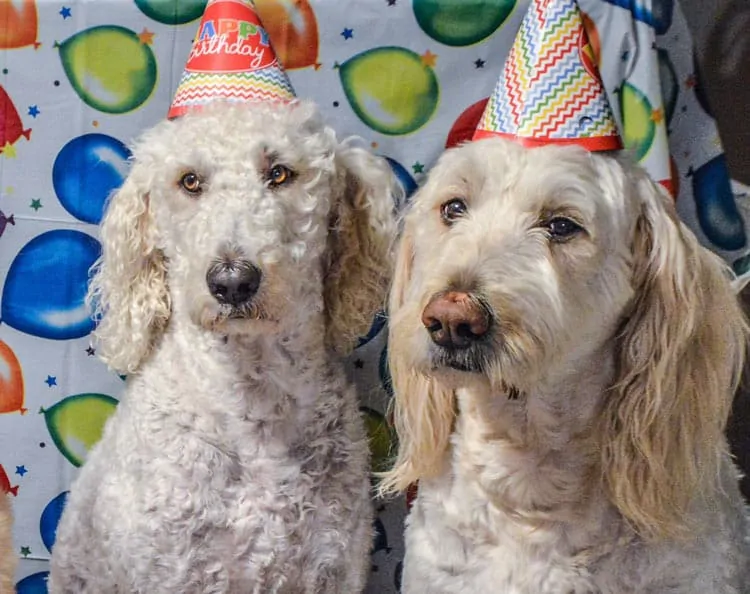
It can be difficult to know what kind of coat a Goldendoodle puppy will have. We asked owners and breeders how to tell what coat your Goldendoodle will have.
How to Tell What Coat Your Goldendoodle Puppy Will Have?
Goldendoodles, the adorable mix between Golden Retrievers and Poodles, come with a variety of coat types: curly, wavy, or straight. Each type has its own grooming needs and aesthetic appeal. Here’s how you can predict the coat type of your Goldendoodle puppy:
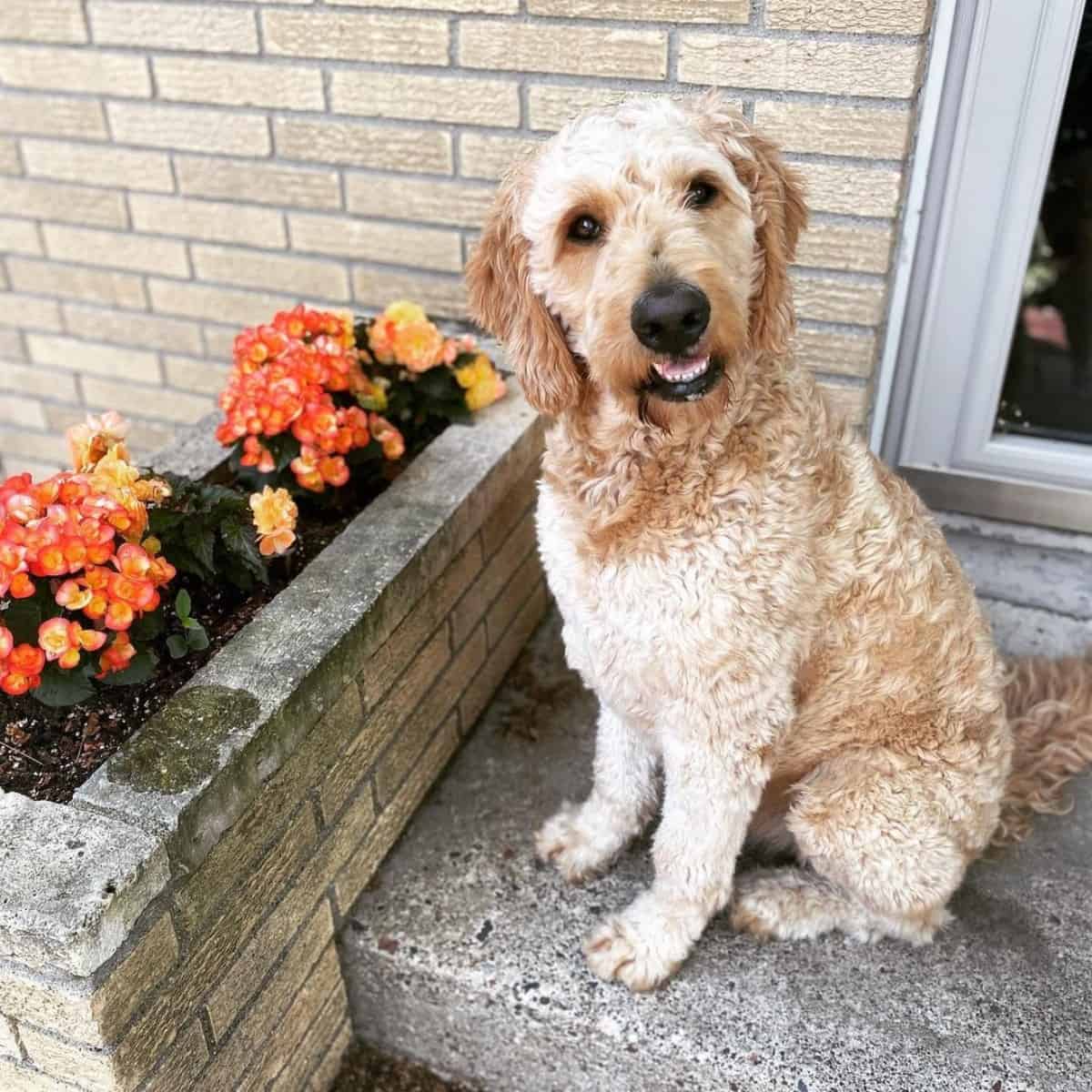
- Check the Snout: The hair growth around your puppy’s nose can be a revealing sign.
- Curly Coat: Look for a prominent moustache appearance, indicating tighter curls.
- Wavy Coat: A beard-like, shaggy appearance around the muzzle suggests a wavy coat.
- Straight Coat: A short and neat snout often means a straighter coat.
- Look to the Parents: Especially for Goldendoodles beyond the first generation.
- The coat types of the parent dogs can give you a good idea of what to expect. If both parents have a similar coat type (e.g., both have wavy fleece coats), their puppies are likely to inherit that coat type.
- If one parent is a Golden Retriever and the other a Poodle, the coat can range from straight to curly, often landing in the wavy category.
- Consider Generational Breeding:
- First-generation (F1) Goldendoodles are direct offspring of a Golden Retriever and a Poodle, often resulting in a mix of coat types.
- Subsequent generations (F1B, F2, etc.) may have more predictable coat types based on the mix (e.g., an F1B Goldendoodle has a 75% Poodle and 25% Golden Retriever genetic makeup, often resulting in a curlier coat).
- Nature and Genetics Have the Final Say:
- While these indicators can provide a good guess, genetics can always bring surprises.
- The variety in a Goldendoodle’s coat comes from the diverse genetic pool of its parent breeds, making each puppy unique.
Veterinarian Dr Charlotte Stiles (DVM)
3 Types of Goldendoodle Coat
People desire Goldendoodles for their temperament and health, as well as the possibility of a non-shedding coat.
Goldendoodles are considered ‘hypoallergenic’ (although there is no such thing as a 100% hypoallergenic dog).
All Goldendoodles can smell, regardless of coat type. There are seven common causes of Goldendoodles smelling – find out more here.
There are three types of Goldendoodle fur coats
- Wavy
- Curly
- Straight
The three Goldendoodle coats have differing degrees of curliness. Different genes inherited from the parent dogs will determine the coat type.
Wavy Coat Goldendoodles
Wavy Goldendoodle coats are the most common coat for Goldendoodles. They are also referred to as fleece coats.
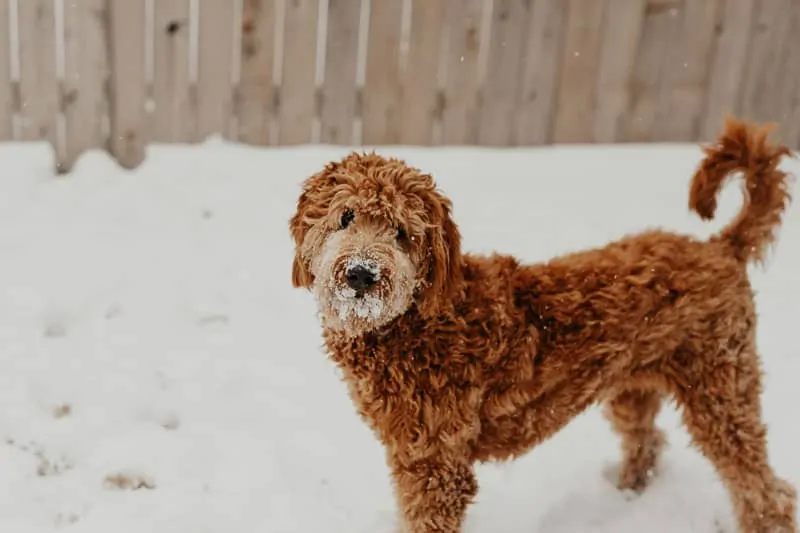
- A wavy coat will grow to around 10-18cm (4 to 7 inches) in left untrimmed
- The hair will typically be shorter around the face
- Wavy coats are low shedding
- Wavy or fleece coats are less dense than a curly coat
- Wavy coat Goldendoodles are low allergy
Wavy coat Goldendoodles need brushing at least once per week. The coat will stay healthy and clean with little effort.
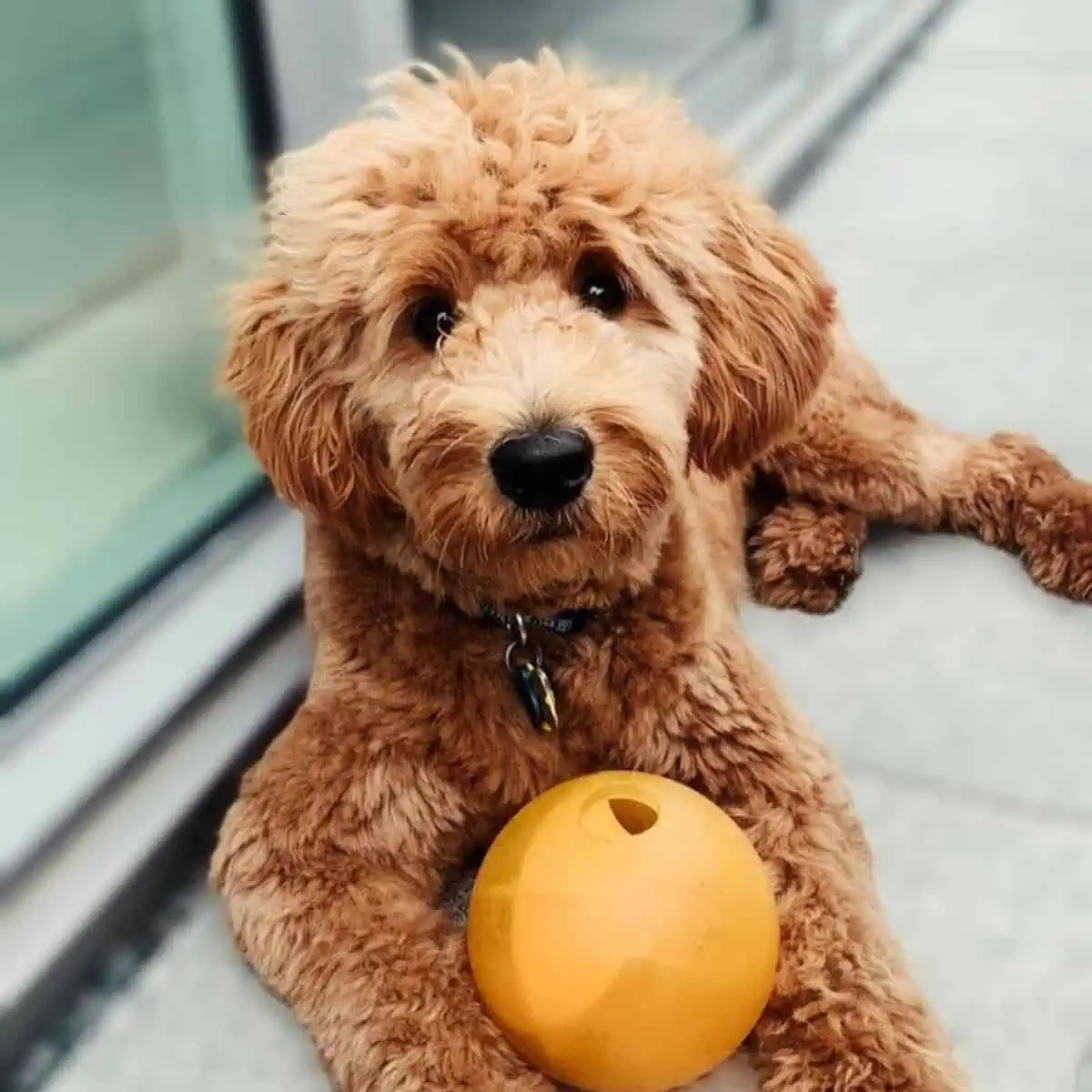
If they are not brushed, they will develop deep tangled hair “knots” that are difficult to remove. If left to develop, sometimes the knots need shaving, which can cause discomfort.
Curly Coat Goldendoodles
Curly Goldendoodle coats feature the densest curls of any Groodle coat type. The curly coat is also most like that of the purebred Poodle.
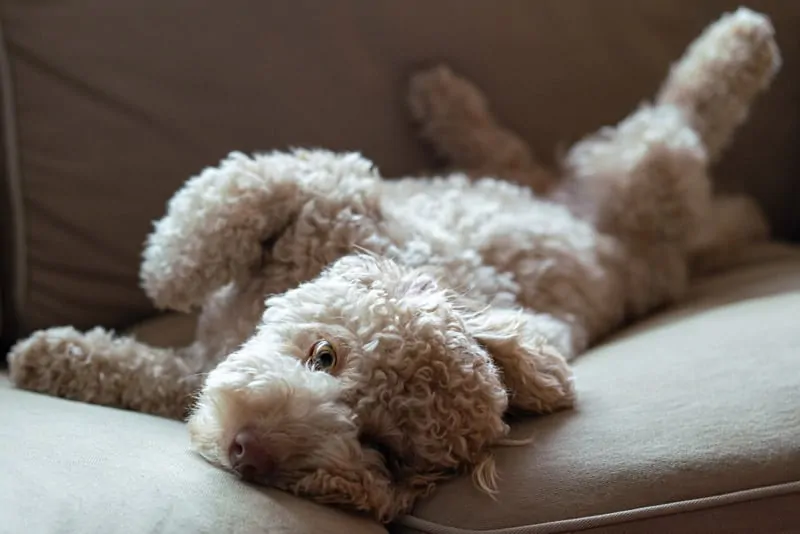
- Curly coats will eventually stop growing if left. The curls are very dense you won’t be able to gauge their length visually.
- The hair will typically be shorter around the face – but not always. This can give a large volume curly “afro” style haircut when brushed.
- Curly coat Goldendoodles are very allergy friendly. They are typically non-shedding. (with the usual reminder that there is no such thing as a 100% hypoallergenic dog)
- Curls can be anywhere from a loose barrel curl to a tight dense kinky curl (Poodle-like)
- If you are taking your puppy to the beach, you will need to be wary of sand getting caught in the layer of curls closest to the skin.
The curly coat is similar but not identical to a Poodle coat. Many owners and breeders report little to no Goldendoodle smell with this coat.
Some owners only cut their Curly Coat Goldendoodles fur two or three times a year. They will need to brush once or twice a week to avoid knotting and give the best appearance.
Straight Coat Goldendoodles
Sometimes the straight coat Goldendoodle is called a hair coat or loose coat. These Goldendoodles share the most coat characteristics with a Golden Retriever.
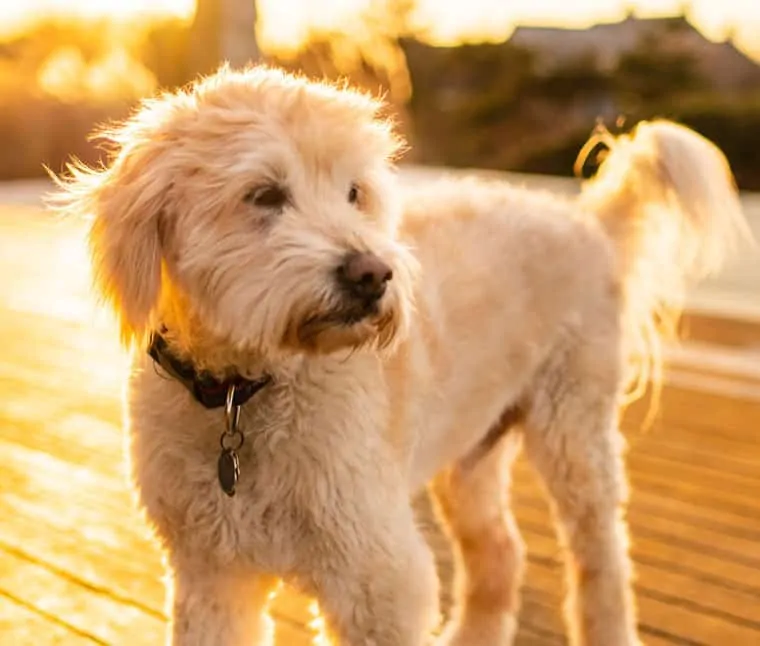
- The straight coat can be extremely low maintenance
- These dogs are shedders
- This type of Goldendoodle is the most likely to cause trouble for allergy sufferers.
- Test individually as many allergy sufferers cope well with lots of different types of Poodle Mix breeds.
Even though this coat is typically the least amount of maintenance – you may still need to brush. And more often than you think. If there is a dense undercoat it will be necessary to brush at least once per week to avoid knotting.
Regardless of coat type, all Goldendoodles can end up with ear wax build-up or infections. Our guide on how to clean Labradoodle ears can be applied to Goldendoodles as well.
If your dog wears a collar or harness frequently you will need to brush these areas irrespective of which coat type is present.
Goldendoodle Coat Stages (Puppy Coat to Adult Coat)
Goldendoodle puppies start shedding their puppy coat generally by six months of age.
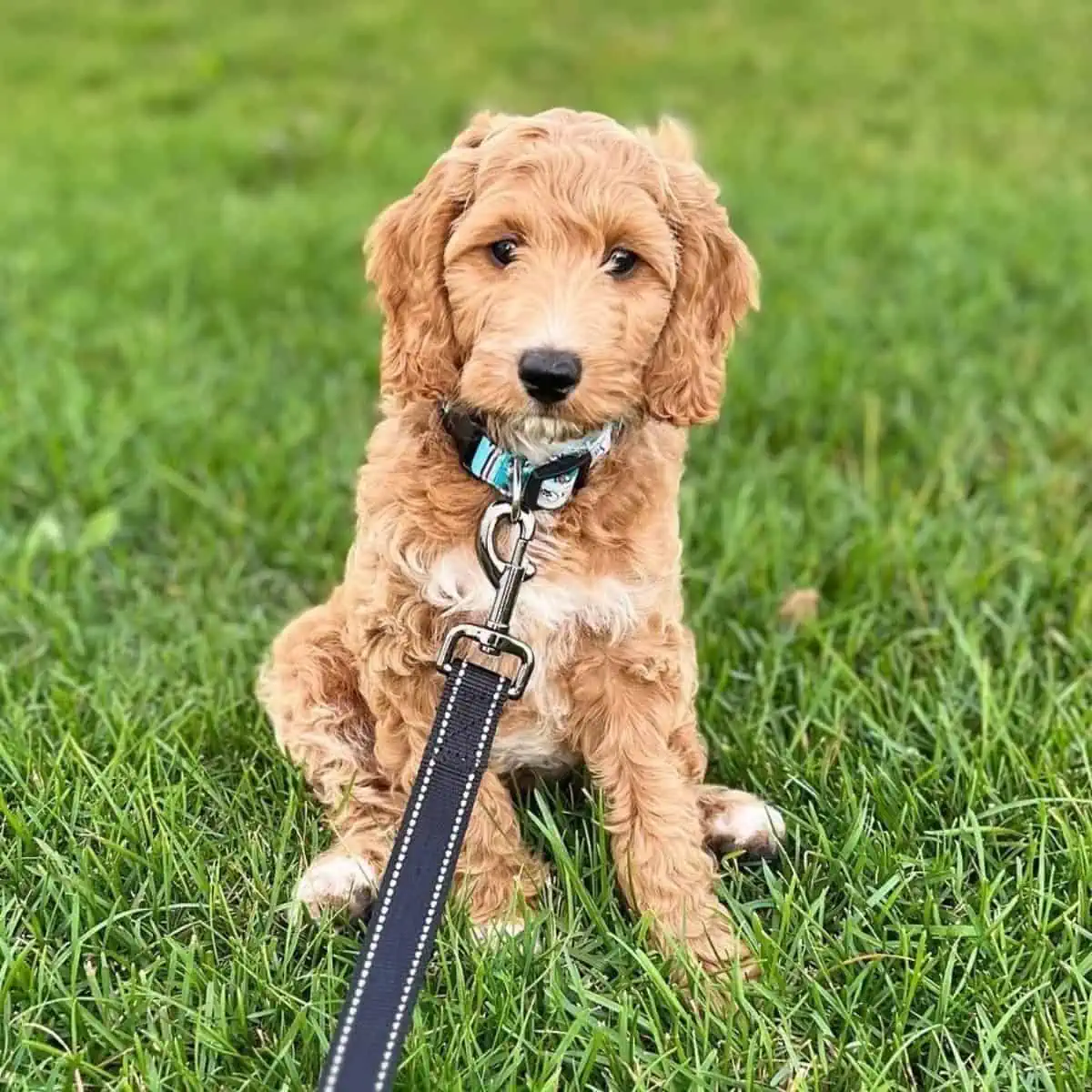
- Zero – 8 months: Puppy coat (softer fur coat)
- 8 months + : Final Goldendoodle adult coat
The replacement adult coat is typically thicker and stiffer than the puppy coat. The change from puppy coat can be sudden. It can also be gradual and take months to switch to an adult coat.
Toy and teacup Goldendoodles will experience a puppy coat change too.
Several breeders say that it is common for Goldendoodle puppy owners not to notice the coat change. The breeders said this is because either
- The coat change was gradual from 6 months of age with no sudden change
- Or some adult coats for Godlendoodles are super soft and indistinguishable from the puppy coat
How To Tell What Coat Your Goldendoodle Will Have?
Genetics will determine the variables of the coat. Cross-breeding dogs can give unpredictable results. Goldendoodle puppies can be more like one parent than the other.
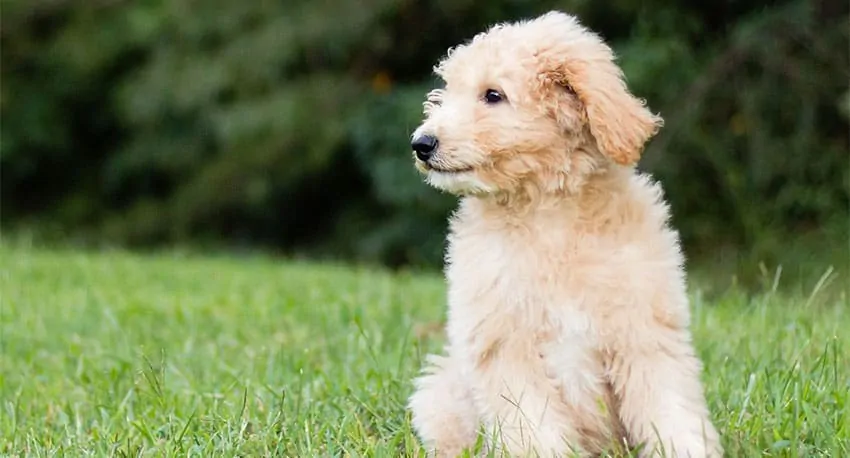
Breeders and owners have noted some tricks and tips to help determine the future coat of a Goldendoodle puppy.
The usual reminder that a Groodle is the same thing as a Goldendoodle. So if you are looking to find out how to tell what type of coat a Groodle will have – you are in the right place.
From early puppyhood through to one year of age, the Goldendoodle coat is in a constant state of development. Knowing exactly the type of coat that a puppy will have as an adult is not possible.
There are however some early signs that give you an indication of what the adult coat will be. We asked owners and breeders how to tell what coat your Goldendoodle will have.
F1B Goldendoodle Coat Changes
An F1b Goldendoodle occurs when an F1 (first generation) Goldendoodle is backcrossed with a purebred Poodle.
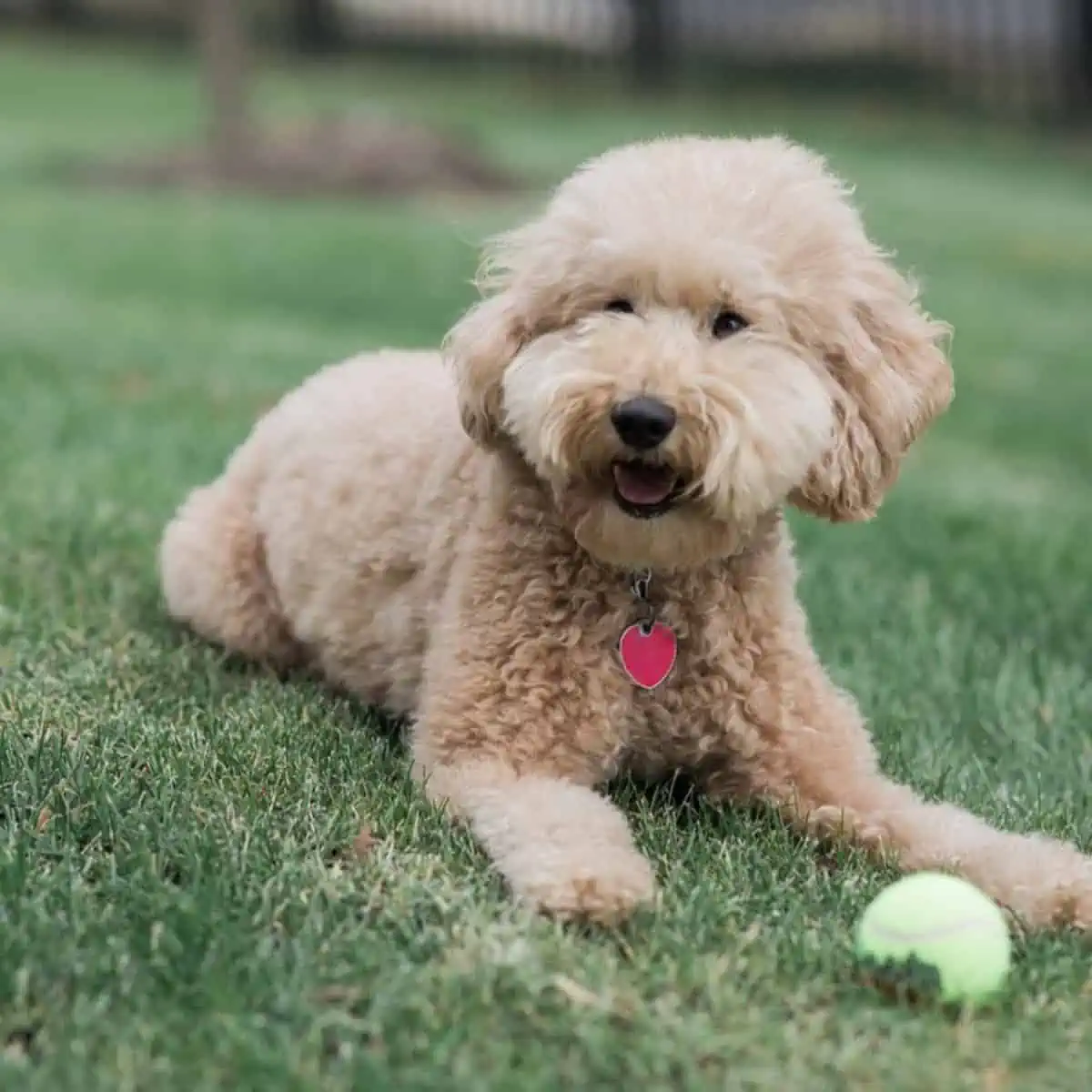
The hypoallergenic, non-shedding Poodle coat is a highly desired feature. An F1b Goldendoodle has an increase of Poodle genetics up to 75%.
This significantly increases the likelihood of a Curly coat or Wavy coat.
F1b Goldendoodles are less likely to have a significant coat change from puppyhood to adulthood. It is common for the fur density and coarseness to increase.
My Goldendoodle Does Not Look Like a Teddy
Some Goldendoodles do not get the gene that gives them the Moustache and Eye hair associated with the “classic Goldendoodle look“.
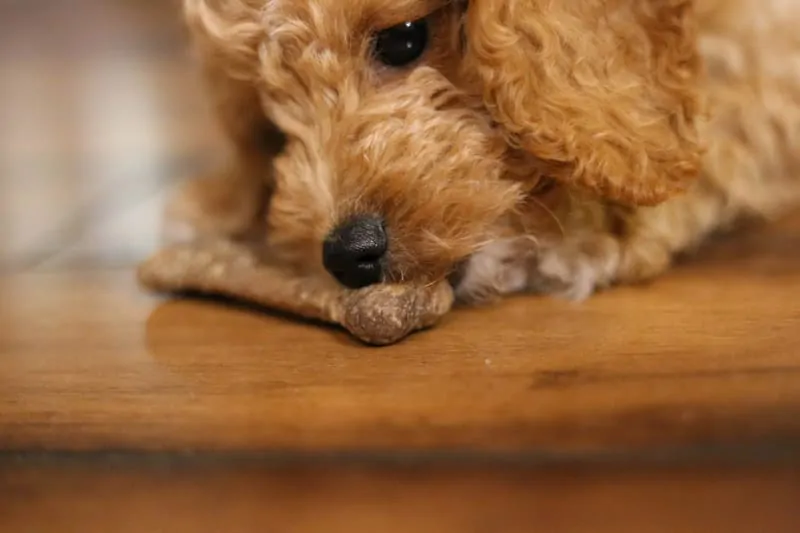
These Goldendoodles do not have teddy bear features. English Goldendoodles are more likely than American Goldendoodles to have a boxy teddy bear appearance. Both types can look very teddy-bear-like with the correct furnishings.
We call the Goldendoodle teddy bear face features furnishings. Dogs with any of the three coat types can also be missing furnishings.
As a result, they can look much more like a Poodle or a Golden Retriever. Bernedoodles experience something similar with their tri-colour coats.
F1 Goldendoodles are the most likely to be missing furnishings. F2 (second generation) of F1b Goldendoodles (75% Poodle) rarely are missing furnishings (Wikipedia).
A puppy without furnishings is unlikely to develop them when the coat changes to the adult Goldendoodle coat. It’s just a quirk of appearance. Don’t stress about it, and enjoy spending time with your pup!